When Bosnia and Herzegovina declared independence in 1992, it adopted a flag intended to capture its unique identity within the Balkans. However, the path to defining Bosnia’s national symbols has been anything but straightforward.
With the country descending into conflict almost immediately, the fragile peace process is reflected in the current national flag. Beyond the national banner, distinct flags represent its two main entities: the Federation of Bosnia and Herzegovina and Republika Srpska.
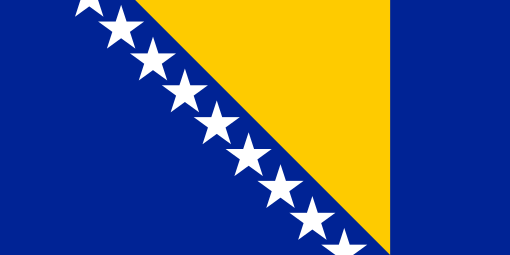
The national Bosnia Flag is designed to highlight Bosnia’s diverse national, regional, and ethnic identities and the country’s journey towards recovery. Here’s a look at the history of Bosnia and Herzegovina’s national flag, the entity-specific flags, and the significance of these designs for Bosnia today.
Historical Flags of Bosnia and Herzegovina
Some of the earliest Bosnian flags originate from the 12th century, when the Kingdom of Bosnia used a royal banner of dark blue with a white “Swiss cross” in the middle. However, this was soon replaced with a design honouring the Kotromanić dynasty.
The Kotromanić family, which would go on to rule until the 15th century, used the fleur-de-lis as their symbol. Given this period coincided with the establishment of the first Bosnian “state,” the fleur-de-lys, known locally as the “zlatni ljiljan” (golden lily), became a symbol of Bosnian sovereignty, legitimacy, and cultural identity.
In 1463, most of modern Bosnia came under Ottoman rule, and the region ceased to have a flag of its own. The standard Ottoman flag — a red field with a white crescent and star—represented the entire empire and was used in all official contexts across its territories. Despite this, some prominent warlords displayed their own banners, especially when organizing a revolt. Most of these included Islamic imagery, given that most Bosniaks became Muslims under the Ottomans.
As the Ottoman Empire declined, Bosnia was annexed by the Austro-Hungarian Empire in 1878. Not only did this result in the nation adopting a more distinctive national identity again, but also resulted in another flag being flown in Sarajevo.
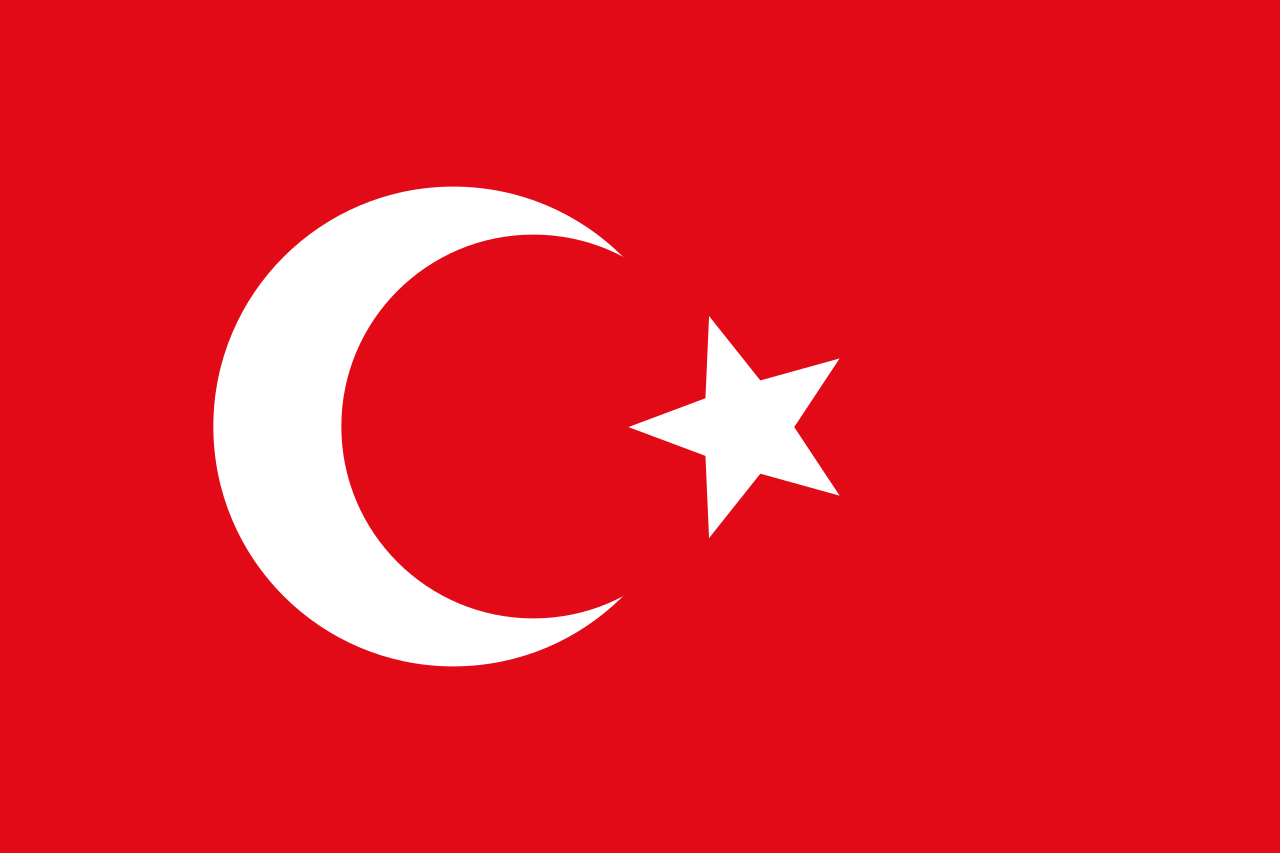
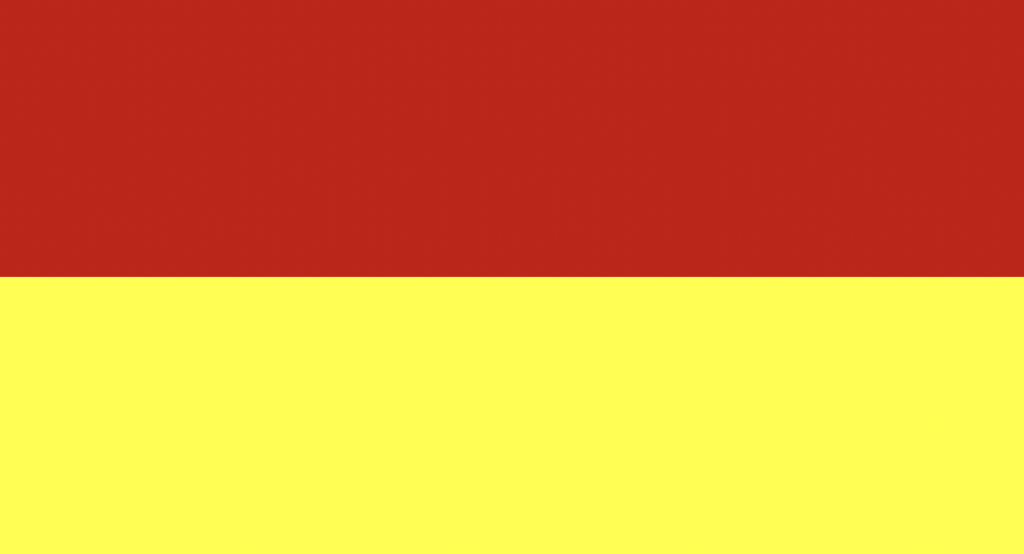
In the opposite situation to that under the Ottomans, the Province of Bosnia was given its’ own flag while the Austro-Hungarian Empire lacked a unifying flag of its own. The red-yellow horizontal tricolour was based on the old Western Bosnian flag from the 15th century.
With the downfall of the Austro-Hungarian Empire in 1918 – ironically caused by events four years earlier in Sarajevo – Bosnia was absorbed into the Kingdom of Yugoslavia. Bosnia itself lacked its own flag, with the nation as a whole represented by a pan-Slavic blue-white-red horizontal tricolour. Given that the three major ethnicities in the region – Bosniaks, Serbs, and Croats – are all Slavic, however, this caused few issues.
When Yugoslavia became a Socialist Republic in 1945, a large red star was added to the middle to represent the national ideology. Bosnia and Herzegovina was also given its own flag, albeit an uninspiring red banner with the national Yugoslav flag in the top left.
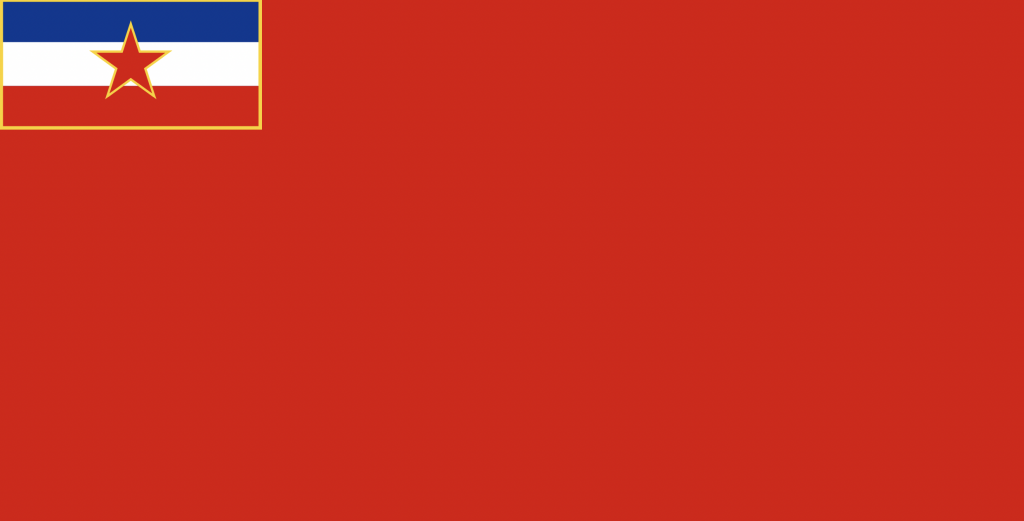
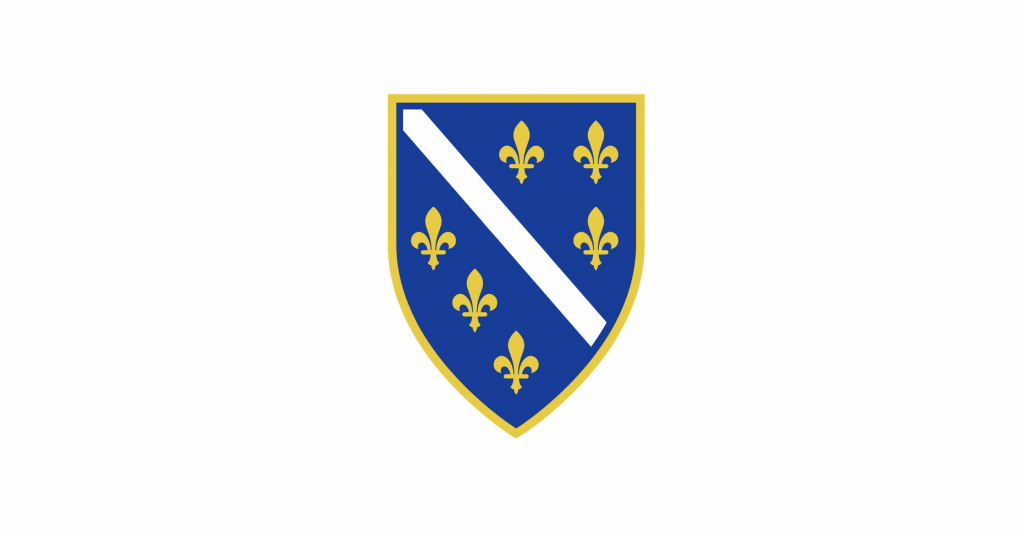
However, as Yugoslavia fell apart in the 1990s, Bosnia and Herzegovina declared independence and adopted their own flag. This was hugely controversial. The new Bosnian flag featured the medieval coat of arms of the Kotromanić family, a symbol seen as representing only ethnic Bosniaks. Given that Serbs and Croats make up half of Bosnia’s population, this was problematic. Those groups flew the flags of Serbia and Croatia to represent them.
After the devastating Bosnian War, the national flag was changed in 1998 to its current design. The Kotromanić flag – with its six fleurs-de-lys – is still flown by ethnic Bosniaks.
The Current Bosnia and Herzegovina Flag
Following the signing of the Dayton Peace Accords in 1995, Bosnia and Herzegovina needed a new, inclusive national symbol. This was unveiled in 1998 with the assistance of the international community.
- Golden Triangle: Roughly represents the shape of Bosnia and Herzegovina. The three corners stand for the three main ethnic groups of the country – Bosniaks, Serbs, and Croats. It has also been said that the triangle is symbolic of Bosnia’s mountainous geography.
- White Stars: These link the country to the European Union, which also has white stars on a blue background as part of its flag. The two “half-stars” at the top and bottom show that they are infinite in number, symbolizing unity and peace.
- Blue Background: This is also a nod to the EU’s flag. The combination of blue, yellow, and white are traditionally seen as “neutral” colours that represent, peace, unity, and prosperity.
Each element on the flag is intended to be neutral. However, despite these efforts, few Bosnians actually fly the 1998 design at anything other than official functions. Instead, most citizens use flags that reflect their ethnic and political identities
Why do I rarely see the Bosnia Flag?
Contrary to popular belief, Bosnia and Herzegovina is not one entity. Instead, the nation is governed under a complex federal system that is comprised of two main entities – the (confusingly named) Federation of Bosnia and Herzegovina, as well as Republika Srpska.
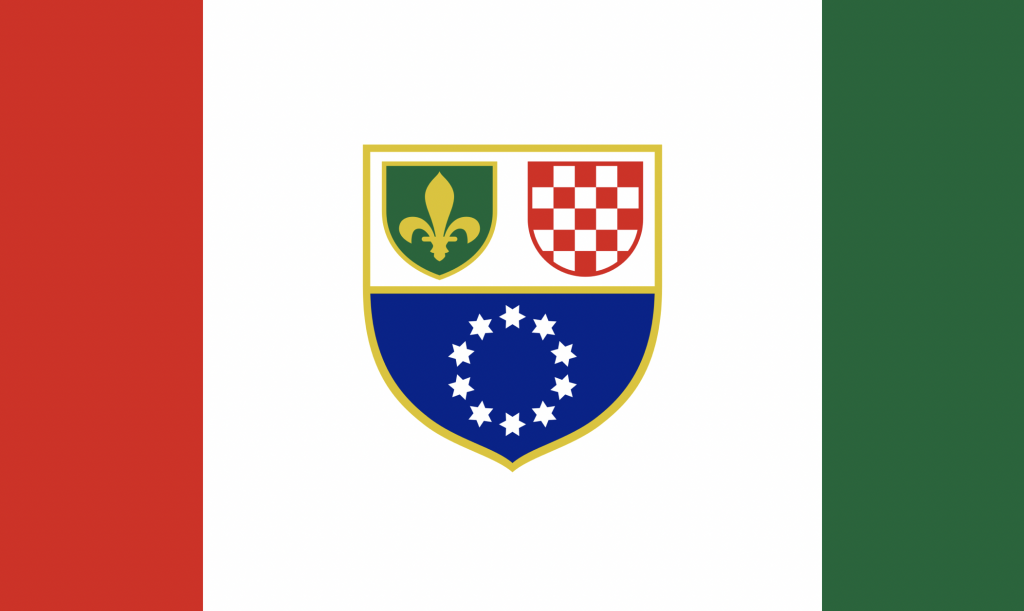
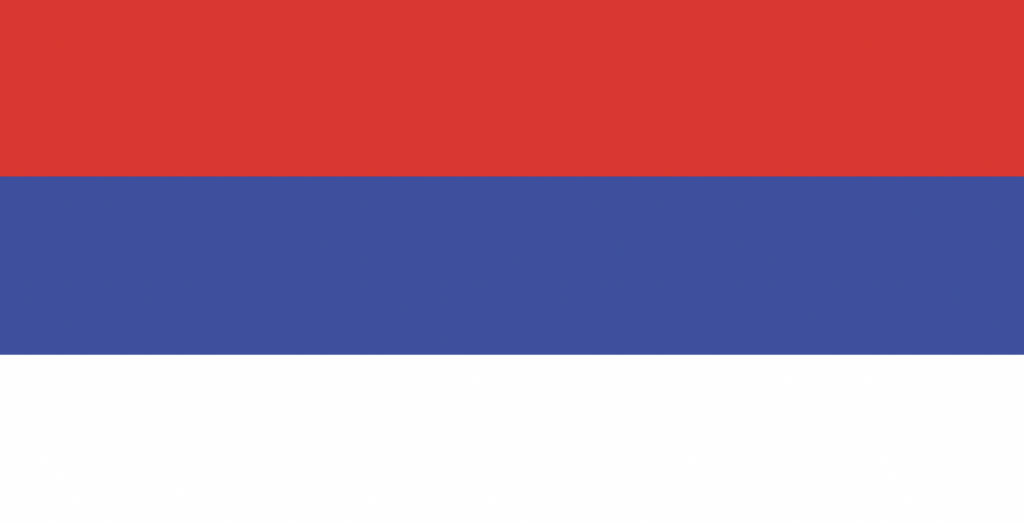
While the Federation no longer has its own flag – it was declared unconstitutional in 2007 – Republika Srpska still does.
- Federation of Bosnia and Herzegovina Flag: The Federation, predominantly composed of Bosniaks and Croats, originally used a flag that included both the Bosnian golden lily and a checkerboard pattern representing Bosnian Croats. However, this flag was ruled to be unconstitutional, due to it being seen as unrepresentative. Since then, the Federation has used the national flag as its provincial flag, without a separate design. Ethnic Bosniaks tend to fly the 1992 Fleur-de-Lys banner, however, with Croats often adopting the national Croatian flag.
- Republika Srpska Flag: The flag of Republika Srpska features the pan-Slavic colours of red, blue, and white in a horizontal tricolour. Although it closely resembles the Serbian flag, it is distinct in not displaying the Serbian coat of arms. The flag of Republika Srpska often appears at government buildings and public events in Bosnian Serb-majority regions. Government officials have even been seen kissing the flag in public, much to the upset of the entity’s minority groups.
The continued use of different flags highlights the challenges Bosnia faces in building a cohesive national identity. Bosnians from different ethnic backgrounds often prefer flags representing their own ethnic or political affiliations.
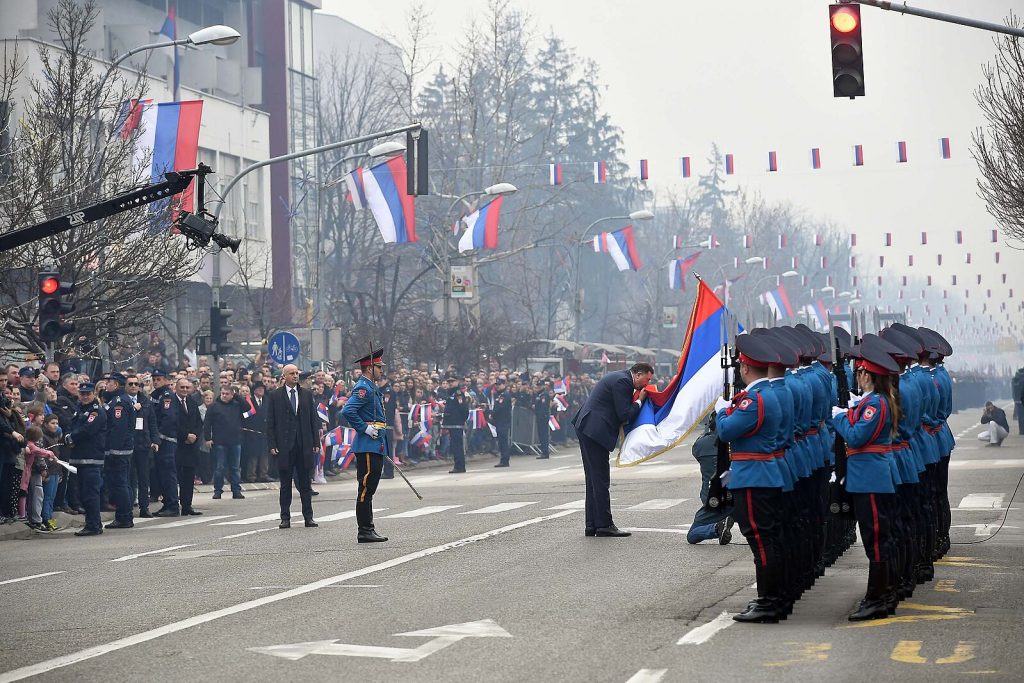
This is especially evident in towns and cities like Mostar, where distinct ethnic communities maintain separate schools, symbols, and even flags. In places like Sarajevo, however, the national flag is more commonly flown, symbolizing a commitment to a unified Bosnia.
How can I see all this in Bosnia for myself?
Reflecting the importance of Bosnia’s history, cultures, and recent conflicts, Young Pioneer Tours has explored every corner of the country over the years.
Currently, we run our Ultimate Yugoslavia Tour twice a year, in November and May. This includes three nights in Bosnia, and we can help you extend your time in the country should you want to.
However, should you want a more specialized itinerary, or just something a bit more “exclusive,” then we can help organize a private tour for you! Check out our Bosnia page or drop us an email – we’re a friendly bunch!





